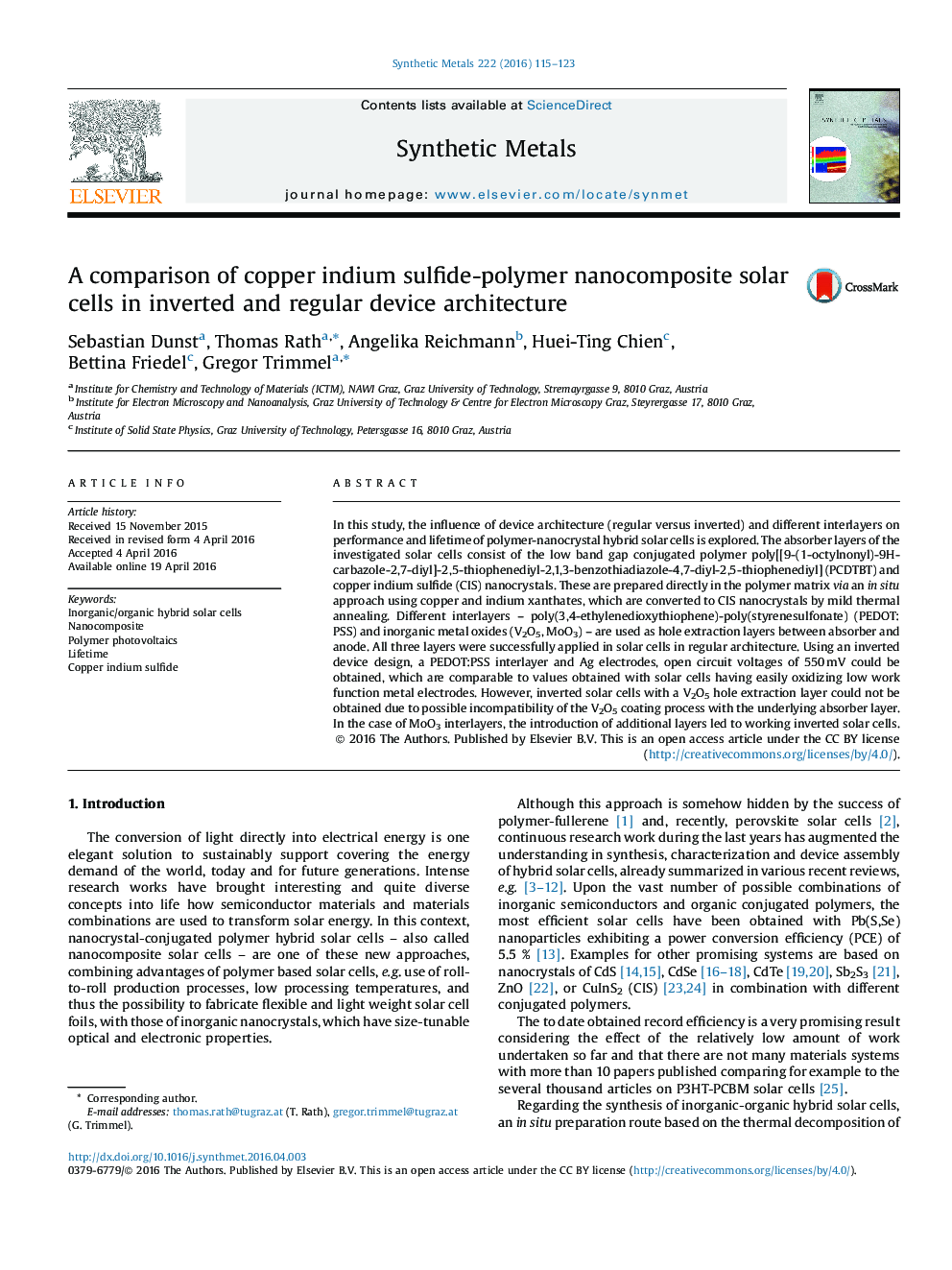| کد مقاله | کد نشریه | سال انتشار | مقاله انگلیسی | نسخه تمام متن |
|---|---|---|---|---|
| 5435619 | 1398115 | 2016 | 9 صفحه PDF | دانلود رایگان |
- Copper indium sulfide-polymer hybrid solar cells in inverted and regular architecture.
- Regular solar cells exhibit higher PCEs than inverted solar cells.
- PEDOT:PSS is more efficient as hole extraction layer than MoO3 and V2O5.
- Encapsulated solar cells in inverted geometry show promising lifetimes.
In this study, the influence of device architecture (regular versus inverted) and different interlayers on performance and lifetime of polymer-nanocrystal hybrid solar cells is explored. The absorber layers of the investigated solar cells consist of the low band gap conjugated polymer poly[[9-(1-octylnonyl)-9H-carbazole-2,7-diyl]-2,5-thiophenediyl-2,1,3-benzothiadiazole-4,7-diyl-2,5-thiophenediyl] (PCDTBT) and copper indium sulfide (CIS) nanocrystals. These are prepared directly in the polymer matrix via an in situ approach using copper and indium xanthates, which are converted to CIS nanocrystals by mild thermal annealing. Different interlayers - poly(3,4-ethylenedioxythiophene)-poly(styrenesulfonate) (PEDOT:PSS) and inorganic metal oxides (V2O5, MoO3) - are used as hole extraction layers between absorber and anode. All three layers were successfully applied in solar cells in regular architecture. Using an inverted device design, a PEDOT:PSS interlayer and Ag electrodes, open circuit voltages of 550Â mV could be obtained, which are comparable to values obtained with solar cells having easily oxidizing low work function metal electrodes. However, inverted solar cells with a V2O5 hole extraction layer could not be obtained due to possible incompatibility of the V2O5 coating process with the underlying absorber layer. In the case of MoO3 interlayers, the introduction of additional layers led to working inverted solar cells.
156
Journal: Synthetic Metals - Volume 222, Part A, December 2016, Pages 115-123
